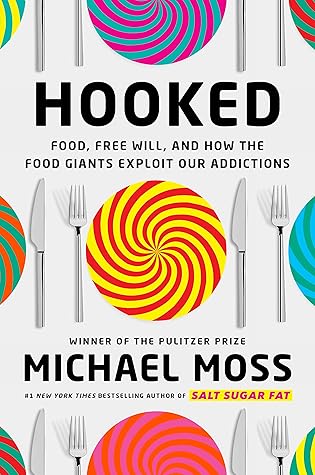More on this book
Community
Kindle Notes & Highlights
by
Michael Moss
Read between
May 5 - May 29, 2025
“When we say, ‘Okay, which scone looks better today, this one or that one?’ we’re totally activating the reward circuitry of the brain and turning off the brake, which is when we decide to eat that scone,” he says. “But if instead we think about how that scone is going to clog up our arteries and increase our odds of a stroke or just make us look shitty in a bikini, it turns down the reward circuitry and turns up the brake.”
When the companies want us to value the cheapness and convenience in their products, we can remember the hidden costs that we have to pay.
Exercise is valuable, too. Not to lose weight, which is very difficult, but by releasing endorphins in our brain, which can lead to the kind of harmony that stabilizes our eating.
The phone manufacturers have begun promoting a dark mode that softens the colors, but there is a less-publicized trick Harris told me about that has a far more dramatic effect. The phones can be switched to black-and-white (in settings, then accessibility, and then display, turn on the color filters and choose grayscale). When I do this, I can almost feel the go part of my brain lose some of its oomph. The phone is much less exciting.
We like what we eat more than we eat what we like, meaning that we can take charge of our food preferences by developing new habits. But as we now know, too, when we change what we eat, they change their products to keep us coming back to them. They’ve done this with salt, sugar, and fat, and they’ll do this again to make their products seem less addictive than they are, or, more broadly, seem like something they aren’t.
They invented vanillin to mimic vanilla because the latter creates such powerful food memories that we’ll overlook all the things that are wrong with their processed goods. But there’s a new hot flavor working its way through their chemistry labs. This flavor is older than old. It goes back to the Miocene epoch of Africa, when Ardi had access to a particular fruit whose sweetness stoked her taste buds and stroked her powers of smell to carve deep channels into her memory banks.
And it delivers a sense of authenticity and ancient cultures, stirring and satisfying in us the “desire for something true and unique,” according to the flavor company that recently declared fig to be the hottest new processed food additive, the new pumpkin spice. Fig flavor is starting to find its way into breakfast cereal, energy drinks, chewing gum, and—wrapped with bacon and prosciutto—onto frozen pizzas. And like those before it, the key to its commercial success will be not just the power it has to get us to want to eat, but rather to get us to eat more and more. When we change what we
...more


